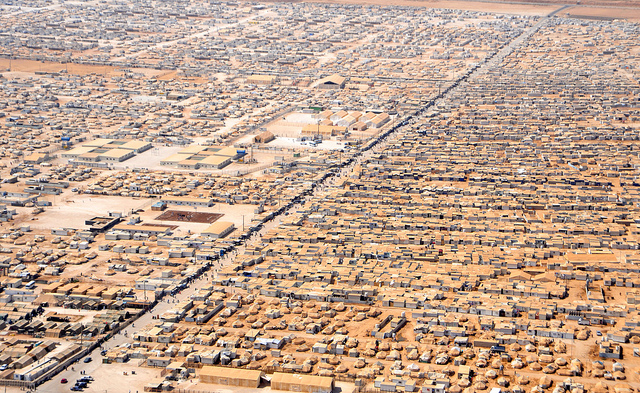
The recent peace talks at Astana in Kazakhstan between the Assad regime and a select group of rebels underlined the Assad regime’s approach to the conflict and its resolution. The regime continued as it had done at other talks by focusing primarily on procedural matters, thus avoiding dealing with the substantive issues such as resolving the conflict. That approach allows it to keep chipping at the opposition, which is now more divided and fragmented than ever, whereas the Syrian army, with the support of the National Defense Force remains committed to victory.
To understand the reticence of the Assad regime, its steadfast refusal to settle and willingness to engage in an all-out war against its opponents, one must understand Alawism: the religious orientation of many of Syria’s leaders and soldiers. It is also important to note Hafez al-Assad’s pragmatism and ruthlessness, inculcated in his son, ‘Dr. Bashar’.
Alawism serves as the mobilizing tool for its Syrian adherents, linking them through a sense of ’asabiyya (solidarity of a group). The term Alawism was invented by the French to describe the inhabitants of Greater Latakia in the French mandate in Northwest Syria.
Until then the Alawites were known as the Nusayris, named after the sect’s mystic progenitor Muhammad ibn Nusayr (d. 868), who was a pupil of the tenth Shia Imam, Ali al-Hadi (d. 873). Ibn Nusayr claimed that he had divine powers, and he instilled a belief in reincarnation among his followers (these traits are ascribed as divine qualities to the first Shia Imam and the Fourth Caliph, ’Ali ibn Abi Talib).
The Nusayris are a syncretistic sect drawing influence from Phoenician paganism, Mazdakism and Manichism as well as Christianity. Much of the Nusayri faith is shrouded in mystery, as they don’t divulge their religion or practices to outsiders, which only serves to heighten the sense of ’asabiyya.
The French-sanctioned name raised the notion the Nusayris are adherents of Ali (the son-in-law of the Prophet Muhammad and the person whom Shi’ites claimed should have to succeed the Prophet Muhammad after he had died in 632). The name change allows the Nusayris, or Alawites, to be placed within the Shia camp and not as apostates. The significance of the name change is that the Shia saw the Nusayris as ghulat (exaggerator) whereas Sunni Muslims saw them as infidels, apostates or heretics, as seen with the famed Islamic jurist Ibn Taymiyya, who issued three fatwas (religious edits) condemning the Nusayris as ‘heretics’ and ‘enemies of Islam’, leading to centuries of brutal persecution.
Two key events helped remove the apostasy association from the Nusayri. The first was a July 1936 fatwa by the grand mufti of Jerusalem, Muhammad Amin al-Husayni, which recognised the Nusayri as Muslims. The Mufti allegedly did that to promote Arab nationalism and solidarity, which may explain why, within months, the Nusayri ceased their opposition to the establishment of a Greater Syria, even though it was under French control.
The second event was a successful petition by Alawite clerics to the mufti of the Syrian Republic in 1952 to have Alawism recognized as part of the Twelver Shia creed. Six years later, the al-Azhar clerics recognized Twelver Shia Islam as ‘religiously correct’, which meant that Shia Islam was recognised—the fifth madhab (school) within Islam. In 1973, 80 religious leaders, representing the different parts of the ‘Alawi country, unqualifiedly affirmed that their book is the Qur’an; that they are Muslim and Shia; and that whatever else is attributed to them is an invention by their enemies and the enemies of Islam.
Bashar al-Assad depicts the same ruthlessness and pragmatism that took his father from a small village in the coastal hills near Latakia, where the Assad family name was known for centuries as al-Wahash (Beast), to the presidency of Syria in 1970. The 1982 Hama massacre—often referred to as al-Ahdath (the ‘events’)—, underlined Hafez’s ruthlessness. The rebels were crushed in a matters of hour by his brother Rifaat, and Assad authorized a three-week aerial and ground bombardment that left as many as 20,000 dead—the goal appeared to have been to terrorise people into submission.
Hafez’s obduracy was seen in the way he approached numerous overtures by the United States and Israel for improved relations. Hafez wanted to be recognized as the quintessential Arab leader, and he wanted it on his terms. When Yassir Arafat and King Hussein reached out to a more receptive Washington, Assad was willing to go back into the cold and wait. During that time, he fortified his power base in Syria and Lebanon, improved his relations with Iran and prepared the ground for Bashar’s succession. In May 2000, a month before Hafez died, Israel unilaterally withdrew from Lebanon, and much of Syria’s ability to withstand such fierce opposition over the past six years stems from the way Assad shaped the military and the state.
The latest peace talks at Astana amounted to very little beyond emphasising the regime’s intractability. They highlighted the regime’s strategy of no compromise, ruthlessness, and pragmatism, as it knows that if it’s not in power, the Alawites would return to being murdbi (sharecropper) or fellah (agricultural labor), and endure the persecution that they’d experienced for eight centuries. And for Assad and his close allies, defeat would either mean death, as was the case of Gaddafi, exile or imprisonment for war crimes.

